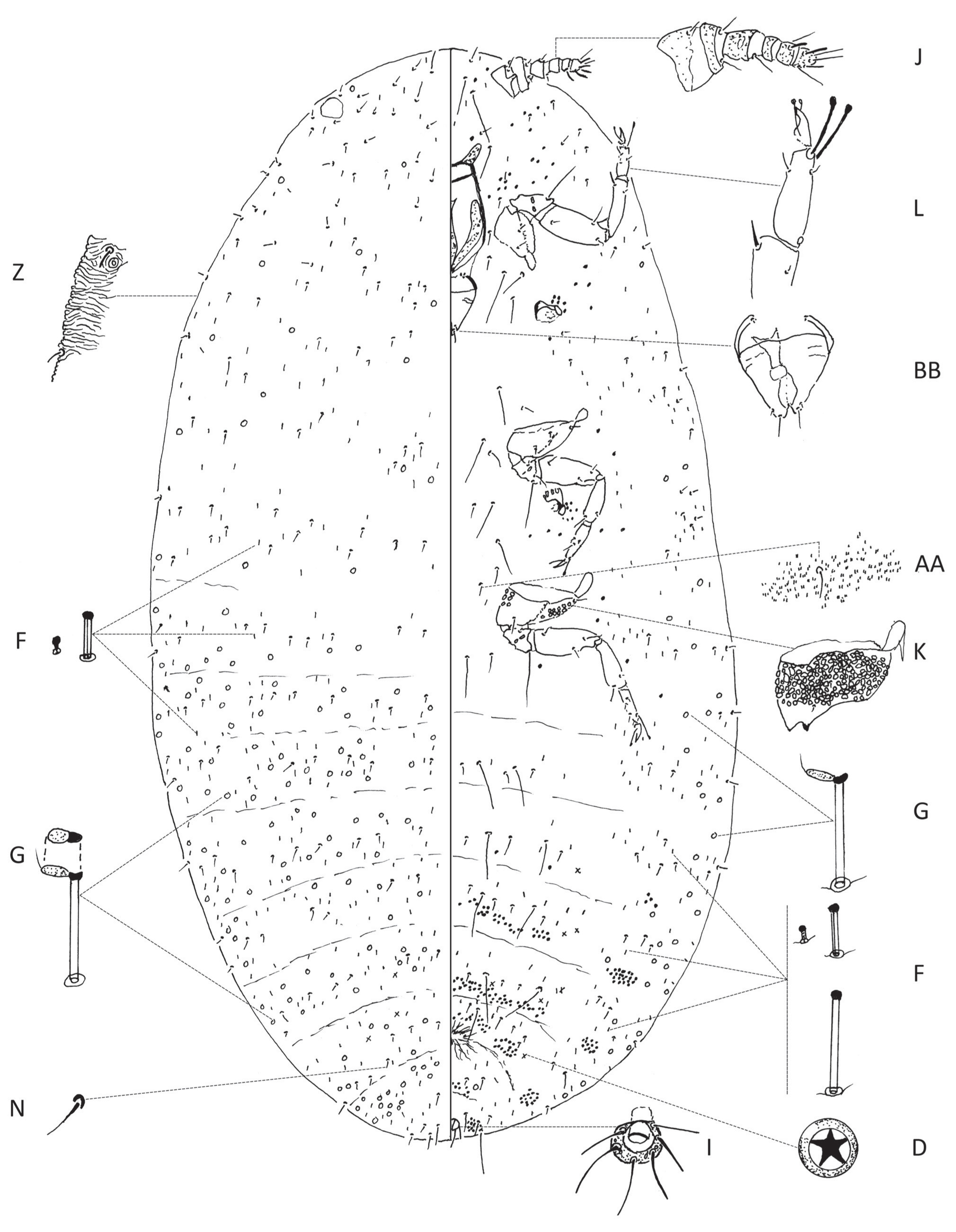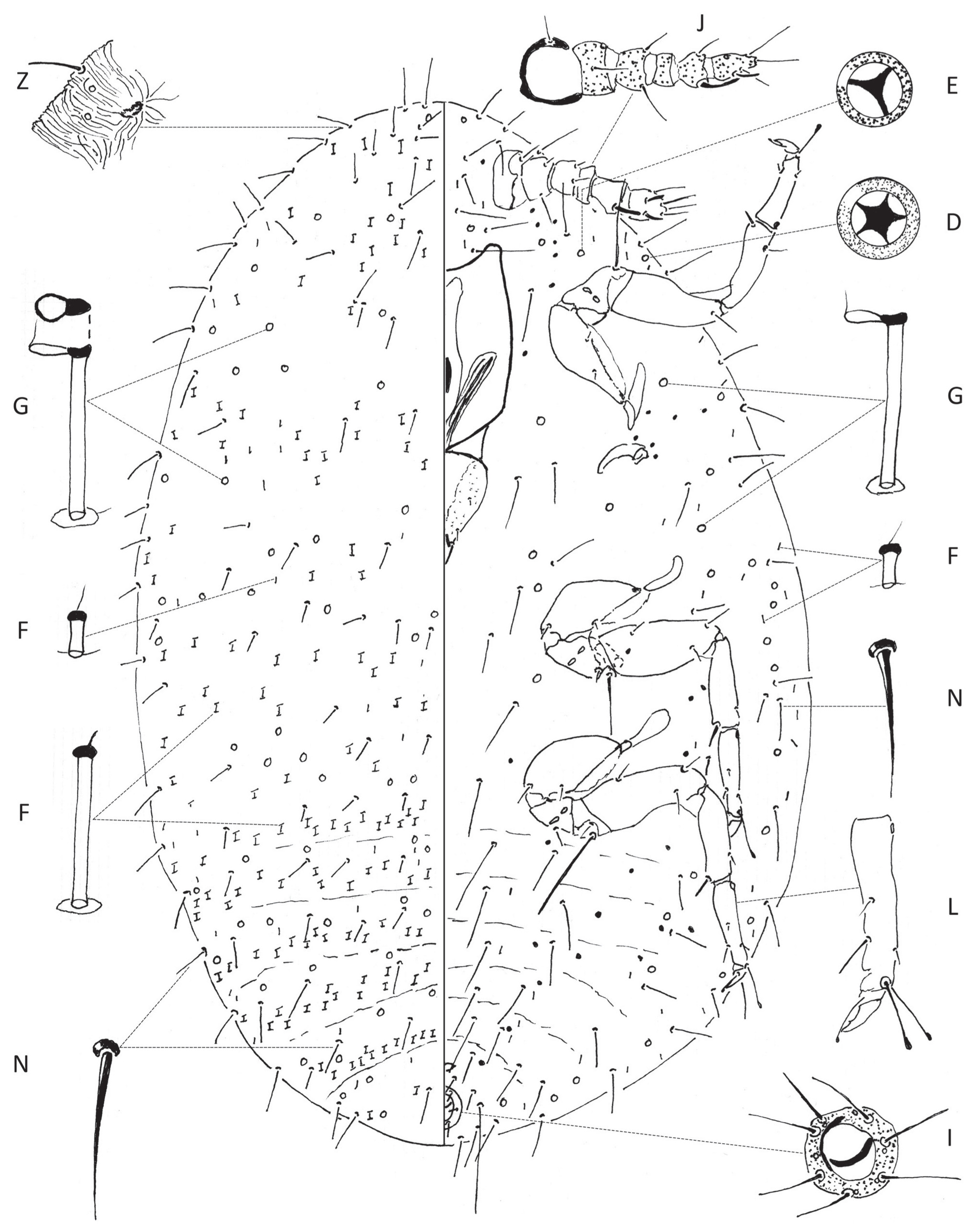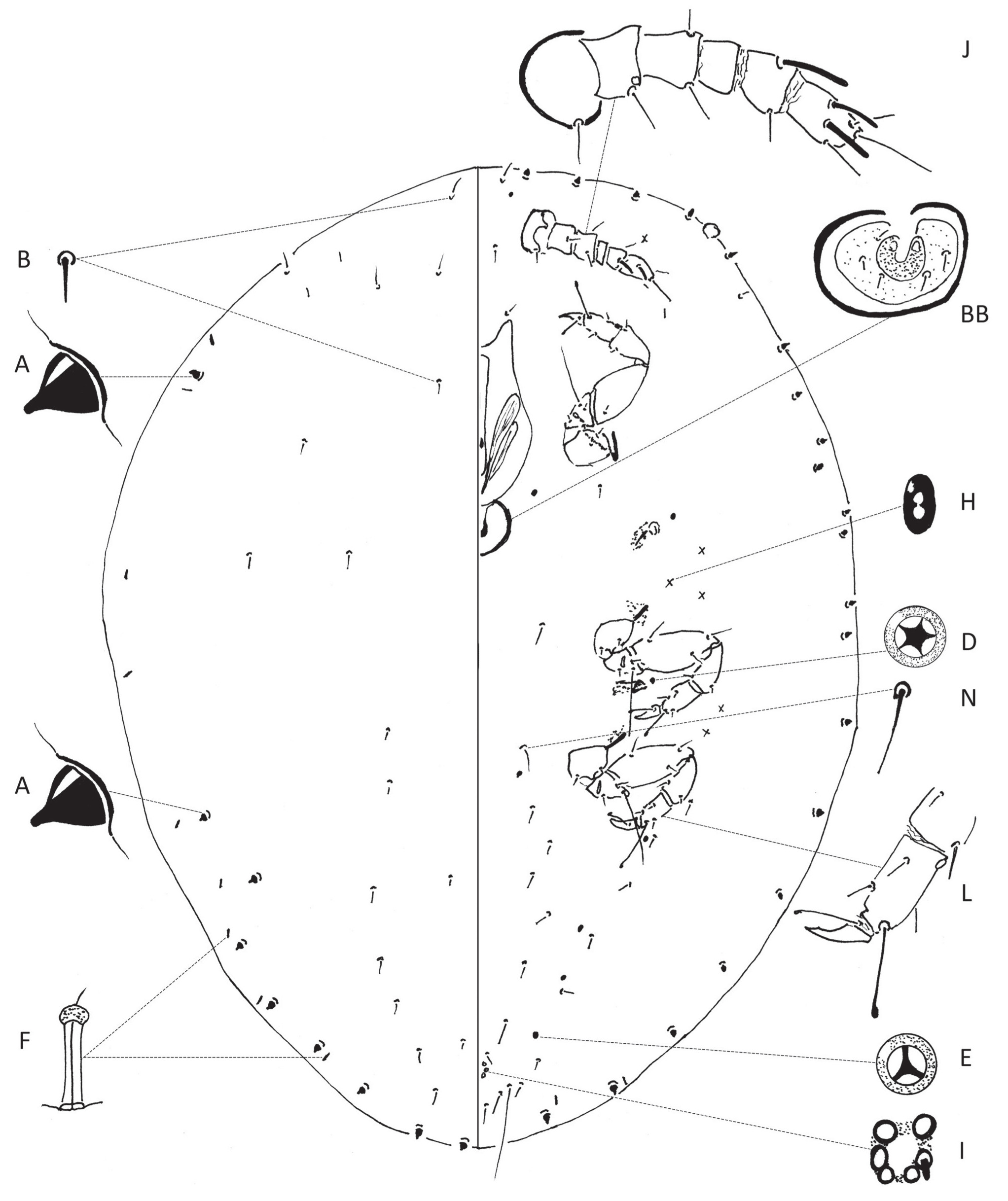Valid Names Results
Ypofloiococcus libeauae Miller & Stocks, 2022 (Eriococcidae: Ypofloiococcus)Nomenclatural History
- Ypofloiococcus libeauae Miller & Stocks 2022: 198. Type data: COSTA RICA: Cedros Island, 3/17/1978, by M. Kosztarab. Holotype, female, by original designation accepted valid name Notes: Paratypes: COSTA RICA: Cedros Island, III-17-1978, on ?, M. Kosztarab (1 ad. ♀ holotype, 7 ad. ♀♀ on 4 slides) USNM. MEXICO: Quintana Roo: Tulum, VI-30-1999, on “chinchona”, (Cinchona sp.?), D.R. Miller and E.A. Sanderson (26 ad. ♀♀, 28 second-instar ♀♀, 10 second-instar ♂♂, 1 first-instar nymph on 13 slides) NHM (1 slide), CDFA (1 slide), FSCA (1 slide), UCD (1 slide), UNAM (1 slide), USNM (8 slides). Illustr.
Common Names
Ecological Associates
Geographic Distribution
Keys
Remarks
- Systematics: The adult females of Y. libeauae are unique within the Eriococcidae of the New World in having the following combination of character states: hind tibia longer than hind tarsus; macrotubular ducts with conspicuous loop attached to vestibule; hind coxae each covered in translucent pores dorsally; sensory setae restricted to distal two segments of each antenna; three sizes of microtubular ducts; multilocular pores forming large clusters on abdomen. (Miller & Stocks, 2022)
- Structure: Holotype, slide mounted 1.6 mm long, 0.9 mm wide (paratypes 1.3–2.5 mm long, 1.1–1.3 mm wide). Body oval (nearly rotund in some paratypes), anal lobes not protruding. Anal-lobe area difficult to discern, dorsally each with 3 flagellate setae including elongate anal-lobe seta (paratypes 2–4), 1 microtubular duct (paratypes 2–4); ventrally each with 2 or 3 flagellate setae including suranal seta and elongate anal-lobe seta (paratypes 3 or 4), 0 microtubular ducts (paratypes 0–4), and 13 and 19 5-locular pores (paratypes 25–30 5-locular pores). (Miller & Stocks, 2022)
- Biology: Specimens collected in Mexico were found under the bark of a tree that the local people called chinchona. We suspect that it may be a species of Cinchona which is the source of quinine used as a treatment for malaria. Bodies of the larger specimens were bright red and the body margin had a coating of white wax.
- General Remarks: Detailed descriptions and illustrations of adult female, second-instar female, second-instar male and first--instar nymph in Miller & Stocks, 2022.
Illustrations
Citations
- MillerSt2022: description, diagnosis, distribution, host, illustration, taxonomy, 198






